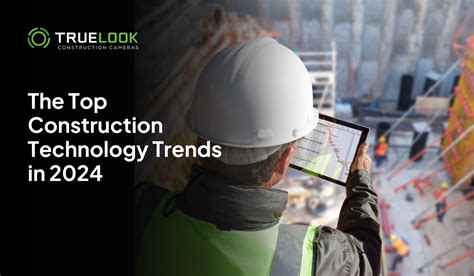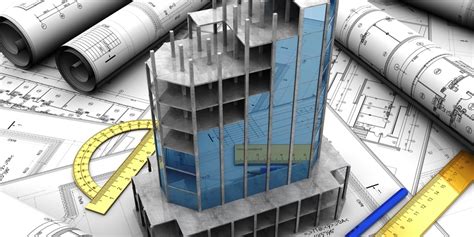The construction industry has long been known for its traditional methods and reluctance to adopt new technologies. However, in recent years, there has been a significant shift towards embracing innovation and leveraging technology to improve efficiency, productivity, and sustainability. As we move forward, it's essential to stay informed about the latest construction tech trends that are transforming the industry. In this article, we'll delve into five key trends that are making waves in the construction sector.
Key Points
- Building Information Modelling (BIM) is revolutionizing the design and construction process
- Artificial intelligence (AI) and machine learning (ML) are being used to improve site management and predict potential issues
- The Internet of Things (IoT) is enhancing site monitoring and enabling real-time data analysis
- Modular construction is gaining popularity due to its potential to reduce waste and increase efficiency
- Virtual and augmented reality (VR/AR) are changing the way we design, construct, and interact with buildings
1. Building Information Modelling (BIM)

BIM is a digital representation of the physical and functional characteristics of a building. It’s a powerful tool that enables architects, engineers, and contractors to collaborate more effectively, reducing errors and improving project outcomes. By creating a detailed digital model of the building, stakeholders can identify potential issues before construction begins, streamlining the process and minimizing delays. According to a study by the National Building Information Model (NBIMS), BIM can reduce construction costs by up to 10% and improve project delivery times by up to 20%.
BIM Adoption and Implementation
As BIM technology continues to evolve, its adoption is becoming more widespread. In fact, a survey by the Construction Industry Institute found that 71% of respondents were using BIM on at least some of their projects. To implement BIM effectively, it’s essential to have a clear understanding of the software and its capabilities, as well as a well-defined workflow and communication strategy. By leveraging BIM, construction companies can improve collaboration, reduce errors, and deliver projects more efficiently.
2. Artificial Intelligence (AI) and Machine Learning (ML)

AI and ML are being increasingly used in construction to improve site management, predict potential issues, and enhance decision-making. By analyzing data from various sources, including sensors, drones, and weather forecasts, AI-powered systems can identify patterns and anomalies, enabling contractors to take proactive measures to prevent delays and cost overruns. For example, AI-powered predictive maintenance can help reduce equipment downtime by up to 50%, according to a study by the International Council on Systems Engineering.
AI and ML Applications in Construction
One of the most significant applications of AI and ML in construction is in the area of predictive analytics. By analyzing historical data and real-time inputs, AI-powered systems can predict potential issues, such as equipment failures or weather-related delays, enabling contractors to take proactive measures to mitigate their impact. Additionally, AI-powered chatbots can help improve communication between stakeholders, reducing errors and improving project outcomes.
3. The Internet of Things (IoT)
The IoT is a network of physical devices, vehicles, and other items embedded with sensors, software, and connectivity, allowing them to collect and exchange data. In construction, the IoT is being used to enhance site monitoring, enabling real-time data analysis and improving decision-making. By installing sensors on equipment and vehicles, contractors can track their location, usage, and performance, reducing downtime and improving maintenance. According to a report by McKinsey, the IoT can reduce construction costs by up to 15% and improve project delivery times by up to 10%.
IoT Applications in Construction
One of the most significant applications of the IoT in construction is in the area of site monitoring. By installing sensors on equipment and vehicles, contractors can track their location, usage, and performance, enabling real-time data analysis and improving decision-making. Additionally, the IoT can be used to track materials and inventory, reducing waste and improving supply chain management.
4. Modular Construction
Modular construction involves building structures in a factory and then assembling them on-site. This approach is gaining popularity due to its potential to reduce waste, increase efficiency, and improve quality. By building in a controlled environment, modular construction can reduce waste by up to 50% and improve construction times by up to 30%, according to a study by the Modular Building Institute.
Modular Construction Benefits and Challenges
One of the most significant benefits of modular construction is its ability to reduce waste and improve quality. By building in a factory, modular construction can reduce waste by up to 50% and improve construction times by up to 30%. However, modular construction also presents several challenges, including the need for specialized equipment and trained personnel. Additionally, modular construction requires careful planning and coordination to ensure that the modules are assembled correctly and efficiently.
5. Virtual and Augmented Reality (VR/AR)

VR and AR are changing the way we design, construct, and interact with buildings. By creating immersive and interactive experiences, VR and AR can help architects, engineers, and contractors visualize and communicate their designs more effectively, reducing errors and improving project outcomes. According to a report by Goldman Sachs, the VR and AR market is expected to reach $80 billion by 2025, with construction being one of the largest adopters.
VR/AR Applications in Construction
One of the most significant applications of VR and AR in construction is in the area of design and visualization. By creating immersive and interactive experiences, architects and engineers can visualize and communicate their designs more effectively, reducing errors and improving project outcomes. Additionally, VR and AR can be used to train personnel and improve safety, reducing the risk of accidents and improving overall site safety.
| Construction Tech Trend | Potential Benefits |
|---|---|
| BIM | Reduced errors, improved collaboration, and increased efficiency |
| AI and ML | Improved site management, predictive maintenance, and enhanced decision-making |
| IoT | Real-time data analysis, improved site monitoring, and reduced waste |
| Modular Construction | Reduced waste, increased efficiency, and improved quality |
| VR/AR | Improved design and visualization, enhanced training, and improved safety |

What is the current state of BIM adoption in the construction industry?
+According to a survey by the Construction Industry Institute, 71% of respondents were using BIM on at least some of their projects. However, there is still a need for greater adoption and implementation of BIM across the industry.
How can AI and ML be used to improve site management and predict potential issues?
+AI and ML can be used to analyze data from various sources, including sensors, drones, and weather forecasts, to identify patterns and anomalies, enabling contractors to take proactive measures to prevent delays and cost overruns.
What are the benefits of modular construction, and how can it be implemented effectively?
+Modular construction can reduce waste, increase efficiency, and improve quality. To implement modular construction effectively, it's essential to have a clear understanding of the process, specialized equipment, and trained personnel, as well as careful planning and coordination.
How can VR and AR be used to improve design and visualization in construction?
+VR and AR can be used to create immersive and interactive experiences, enabling architects and engineers to visualize and communicate their designs more effectively, reducing errors and improving project outcomes.
What is the potential impact of the IoT on the construction industry, and how can it be implemented effectively?
+The IoT has the potential to reduce construction costs, improve project delivery times, and enhance site monitoring. To implement the IoT effectively, it's essential to have a clear understanding of the technology, specialized equipment, and trained personnel, as well as careful planning and coordination.
As the construction industry continues to evolve, it’s essential to stay informed about the latest technologies and trends. By embracing innovation and leveraging technology, construction companies can improve efficiency, productivity, and sustainability, delivering better projects and improving the built environment. Whether it’s BIM, AI and ML, IoT, modular construction, or VR/AR, each of these trends has the potential to transform the industry and improve the way we design, construct, and interact with buildings.
